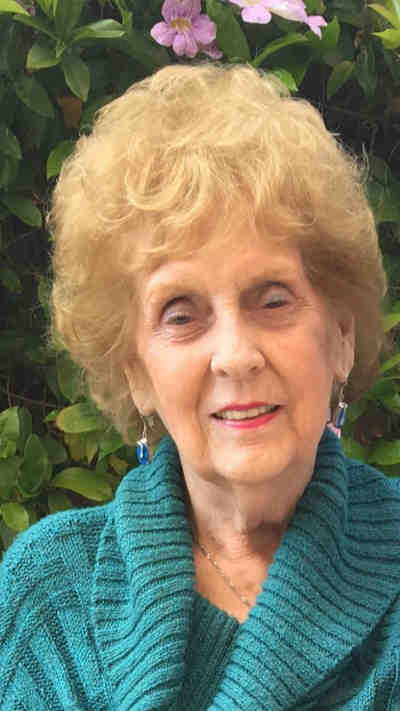
Ricardo Favela grew up around the Fallbrook avocado fields while Tom Metzger produced a white supremacist through a bull horn he carried far outside Southern California.
Metzger, Grand Dragon of the Ku Klux Klan of the state of California, was a notorious citizen in Fallbrook. The California KKK, under his leadership, was different from the white code and hot South crosses. Violence and its threats did not target Black people; they were targeted at foreign families such as the Favela.
Tales of Mexicans being thrown down a steep slope circulated between Favela and his friends. The stories were not just urban myths. A border official told a New York Times reporter that the agents themselves had pushed the aliens off the cliffs “so it would have been like an accident.” Groups of white Whites, affiliated with the KKK, continued with “beans” to search for, beat and even kill Latino immigrants in North County and beyond, according to a 1990 report in the California Legislature.
Favela’s father, Eleuterio, once met two young white men with baseball bats, while he was working on a farm. Eleuterio was holding a water key – a long metal object. He told the men that he would defend himself and they returned quietly. The whole visiting family since then has a similar story, Favela told me.
Between 1988 and 1990 – when Favela was a hundred years old – hundreds of migrants were killed in San Diego County, according to Greg Grandin, a historian at Yale University.
“We were in self-defense,” Favela said. While a student at Fallbrook High, Favela joined United Pride – a group formed by Latinos to protect themselves from violence from open-minded people, as well as law enforcement officials.
Metzger preached the doctrine of violent White power. But years after the KKK members carrying the cards moved or died, another form of White power remained in Fallbrook – a political movement.
Recent Census data shows that the excluded city of Fallbrook is actually 50 percent Latino. But until recently the town did not have a single Latin representative on any government boards. In 2020, Favela was elected board of the Fallbrook Union Elementary School District – a district with 65 percent Latin students. He was the first Latino elected, the district secretary, who searched the district records, told him.
Favela, forty-four, was part of a delegation in 2020 that brought the start of the Latino delegation to Fallbrook. A 29-year-old man was selected to attend the high school district. A 27-year-old man has been elected to the health board. And the 23-year-old was selected to the Firebrook fire station.
“Our presence today is undeniable. We cannot plan for the future in Fallbrook without a Latin state, “said Favela.
The victory of Feavela and other contestants was made possible by two factors.
In 2019, Fallbrook was one of the last places in San Diego to reorganize its elections to comply with the California Voting Rights Act, a law enacted in 2001 to ensure fair representation. The Voting Rights Act abolished the use of by-elections where they undermine the ability of some parties to elect their representatives.
Fallbrook, like many other areas of San Diego, has made such big decisions. This meant that candidates competed for a seat in the entire Fallbrook region, not within the smaller states. And since the majority of voters were White, choosing a Latin man was difficult.
In 2019, members of the board of the Fallbrook Union Elementary eventually moved to demolish the city into smaller districts, threatening the courts. Fire, health and high school districts followed. Each district ended up with a majority of Latin districts. That change opened up a clearer way to represent Latino. But some amorphous powers have been in operation for years.
Metzger’s White power march, violence and feelings of anti-aliens in Fallbrook prompted Latinos to plan. United Pride was formed in the early 80’s and for decades became a powerful political force.
“We are tired,” said Hector Muro, a first member, graduating from Fallbrook High in 1985. “We were organized and cohesive and committed ourselves to changing the image of Latinos as the softest people you can be.
The White establishment of the city met with minor acts of Latin presence and migration at the time, Muro said. As a child he remembers for the first time the Latinos team walked in a Christmas competition. In the newspaper the next day, someone wrote that the immigrants had to return to their homeland.
When Muro was in high school, he recalls, White students moved to create a chapter in White Aryan Resistance – a Neo-Nazi group formed by Metzger – at Fallbrook High.
“Basically, they were saying, ‘Well, they have their own Spanish club, so why don’t we have our own team,'” said Muro.
Let Wallbrook leaders let White students start their group chapter, Muro said. But school clubs are required to accept any member signing. So, all members of the United Pride signed up to be part of the WAR.
“We all applied to become members and they had to close it,” said Muro. “We lost fear.”
United Pride continued to grow its political power – even though the goal of political representation was far removed at the time. Favela was a member when she graduated from Fallbrook High in 1995.
Meanwhile, Metzger’s move has hit obstacles. In 1990, a prison found Metzger and his son guilty of inciting black people to beat up a young Black man. They were ordered to pay over ten million dollars to the man’s family.
After selling his home, Metzger was forced to move from Fallbrook in 2006, according to the San Diego Times.
“I just think it’s amazing that some of these people did their job in life to push us out of Fallbrook, but we pushed them out,” Favela said.
The visceral White power of the 70’s and 80’s began to wane. Instead of planning for self-defense, community members began planning community issues such as parks and education. Favela and others protested the 1998 ban on bilingualism. In the late 2000s, he helped represent the park in a low-cost, multi-faceted Latino area of Fallbrook and was later appointed to the planning board.
Favela and two other community members drew new district maps for the 2019 Fallbrook Union Elementary School District. But the maps were controversial. Board members at the time approved an election plan that delayed the creation of a majority-Latino district. The San Diego County Office of Education overturned the move and approved a map of the Favela site.
Favela, Muro and others went on to train a group of young protesters. Cindy Acosta works for North County Fire Protection District and Stephanie Ortiz works for Fallbrook Regional Health District. They were all amazed at how many Latinos were missing from their denominations.
Both, for example, gained much experience from non-Spanish translations.
“I was determined to push for [relevant information to be changed] and I was surprised that it hadn’t happened yet,” Acosta said.
They also recommended that people assigned to work in the surrounding areas speak two languages.
“Just being smart, if you don’t have people who fit in with people of different cultures and cultures, then you have gaps in the services you provide,” Ortiz said.
The question before the residents of Fallbrook now, is whether one of the Latino operators on their boards rules fully.
While the city of Fallbrook is 50 percent Latino the governing boards of Fallbrook represent large areas with a slightly lower Latino population. The Fallbrook Union Elementary regime, for example, is thirty-eight percent Latino, based on that regression page – but only one of its five most Latino states.
As new maps are drawn out in the future, the goal will be to maintain their current capacity and, if possible, say Ortiz: “People know that as a community we will not let things slip.”
Adriana Heldiz also presented the report.
How many Mexicans live in the United States?

| Year | Population | Part of all US immigrants |
|---|---|---|
| 2019 | 10,931,900 | 24.3 |
What percentage of the United States is Mexico? According to estimates of the 2019 US Census Bureau, there are 60.5 million Hispanics living in the United States. This group represents 18.4 percent of the U.S. population. In 2019, among the Spanish groups, Mexicans were ranked as the largest at 61.4 percent.
Where do most Mexicans in America live?
About 61 percent of Mexican Americans live in just two states, namely California (36%) and Texas (25%). According to the 2010 census, the distribution of the Mexican American population in the United States by region is: 51.8% living in the West, 34.4% in the South, 10.9% in the Midwest, and 2.9% in the northeast.
In what states do the majority of Mexican Americans live?
But that, the two countries with the most Hispanics, California (15.6 million) and Texas (11.5 million), only makes up 45% of the Spanish population. Together, the four border countries were home to 50 percent of the US Hispanics by 2019. The population of the Latino population has also spread across the country.
Where do most Mexican citizens live?
The majority of Mexican Americans live in the southwest (over 60% in the states of California and Texas).
What are citizens of Mexico called?

Mexicans (Spanish: mexicanos) are Mexican citizens. The official language of Mexico is Mexican Spanish, but some may also speak languages from 68 different languages other than those imported from Mexico or from other countries or studied by Mexican immigrants.
Are the Spanish and Mexico the same? Hispanic / Latino ethnic groups Census Bureau’s 2010 census provides definitions of the terms Latino and Hispanic: “Hispanic or Latino” means a person of Mexico, South or Central America, or another Spanish culture or origin regardless of race.
What do you call a Mexican in America?
Chicano or Chicana is the preferred brand for most Mexican Americans in the United States. The Chicano brand is sometimes used differently in Mexico America, although the terms have different meanings.
What is it called when your Mexican?
Hispanic / Latino ethnic groups Central and South America, and other Spanish cultures “. by race.
What do you call Mexicans born in the US?
Chicanos people from Mexico were born in the United States. Some Central Americans represent either (seeing themselves) as Chicano. Mexicanos Mexicans were born in Mexico. Mexicano is derived from the word Mexica (Meh-chi-ca), which is what the early Mexicans called themselves.
What are the 3 largest Latino groups in the US?

In 2019, among the Spanish groups, Mexicans were ranked as the largest at 61.4 percent. The following groups are: Puerto Ricans (9.6 percent), Central Americans (9.8 percent), South Americans (6.4 percent), and Cubans (3.9 percent).
What is the largest Spanish region in the US? By 2020, the major Spanish-speaking cities were San Antonio, Texas (1.43 Million inhabitants), El Paso, Texas (679,000), Fresno, California (542 Thousand), Miami, Florida (442 Thousand), and Bakersfield, California (403 Thousands).
What are the three largest Latino groups in Washington DC?
Name three major Latin groups in the United States. Answer: Cuban-America, Puerto Ricans and Mexican-America. 4. What is the largest group of Latinos living in Washington DC?
What are the three largest Latino groups?
This group represents 18.4 percent of the U.S. population. In 2019, among the Spanish groups, Mexicans were ranked as the largest at 61.4 percent. The following groups are: Puerto Ricans (9.6 percent), Central Americans (9.8 percent), South Americans (6.4 percent), and Cubans (3.9 percent).
Where do most Hispanics live in DC?
Columbia Heights and Mt. Pleasant neighborhoods have been at the heart of the Latin community in DC for decades. More recently, however, Latinos have moved to other parts of the city in increasing numbers.
Where are the largest Latino communities in the US?
In 2019, California had the highest Spanish population in the United States, with more than 15.57 million people claiming Spanish inheritance. Texas, Florida, New York, and Arizona round out the top five countries.
Where are the largest Latino groups in the US?
In 2019, the countries with the largest Spanish population were California, Texas, Florida, New York, Arizona, Illinois, New Jersey, Colorado, Georgia, New Mexico. Another important point is that in 2019, 30.8 percent of Hispanics were under the age of 18 compared to 18.6 percent of non-Hispanic whites.
What US city has the largest Hispanic Latino population?
San Antonio, Texas is the largest Latin-majority city in the United States, with eight hundred and seven hundred Latinos making up 61.2% of its population.
